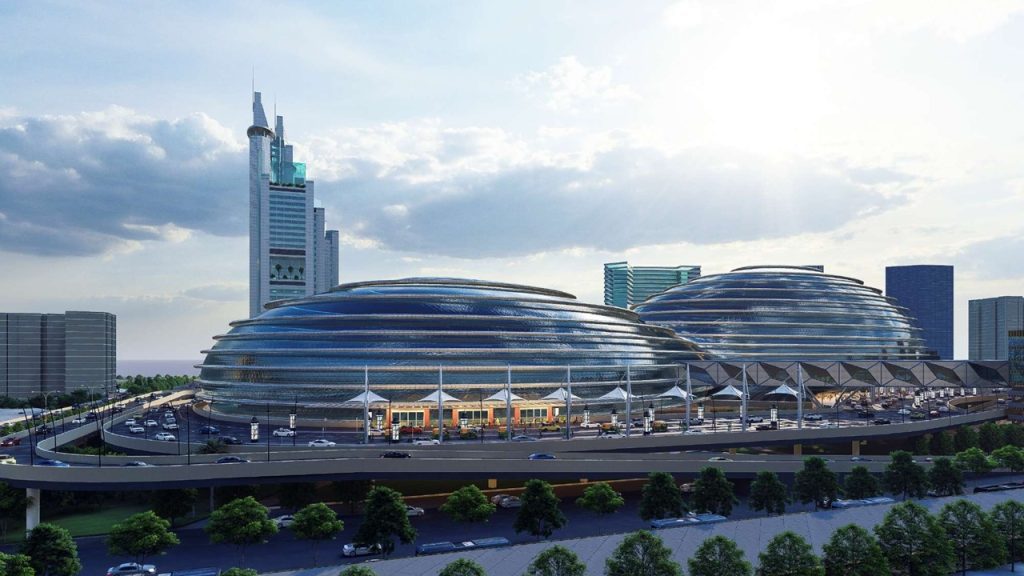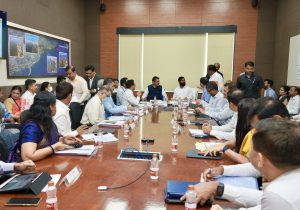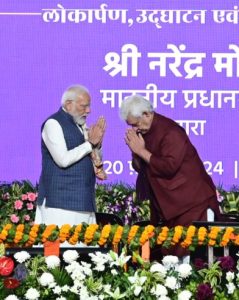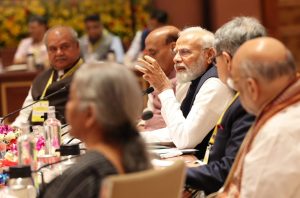India now 5th largest economy, but China still 6 times bigger

Photo Credit Twitter Ministry of Railways
A News Commentary
By Manish Anand
New Delhi, September 4: Irony in the modern economy is much deeper, as gains of advancements globally, including in India, remain confined to a few at the top of the echelons of the economic strata.
India has become the fifth largest economy in the world, pipping the UK to the sixth place. The per capita income of the people at $2300 gives India 144th position in the world ranking on the same parameter.
While a section of the people are rejoicing at the feat of India becoming the fifth largest economy, there’s another sign of worry that the manufacturing sector, which should be the flagbearer of an advanced economy, employs just about 12 per cent of the workforce in the country.
Indeed, the Narendra Modi government in the country has been asserting that India is on course to become a $ five trillion economy shortly, by 2025, and thereafter there would be an exponential expansion of the economy to $10 trillion in 2030 and $30 trillion in 2050.
But that’s a long way into the future.
Even while India is now the fifth largest economy in the world, China is more than six times bigger economy. India’s share in the global GDP is just about 3.5 per cent, while the US accounts for almost a quarter, and China another one-fifth.
That must give the Indian economy a perspective. The UK battling the downturn in Europe for over a decade now is slipping on the growth radar.
On Sunday, the Union Minister for External Affairs S Jaishankar, while speaking at the launch of the Hindi version of his book ‘The Indian Way’, said: “India has recently become 5th largest economy of the world and the 5th largest economy would not think like the 20th largest economy.”

Indeed, that should call to throw yokes off the shoulders of the economy, including self-limiting agriculture, big ticket projects’ delays, transition to knowledge economy, speedy skilling of the people and so on.
Kaushik Basu, an economist known for his anti-BJP stance, who was an advisor to the Manmohan Singh government nonetheless said that the credit for India jumping the ladder on economy lied with Narasimha Rao and Manmohan Singh governments.
“India’s growth spurt from 1994 and even faster growth from 2005 made this inevitable, despite the sharp slowdown since 2016. It’s like a relay race won inspite of the last runner,” Basu tweeted.
The SBI in its report, however, has said that India is on course to become the third largest economy in the world by 2029.
“India will surpass Germany in 2027, and most likely Japan by 2029 at current rate of growth. Report says India has undergone large structural shift since 2014 and is now the 5th largest economy overtaking UK,” added the SBI report.
But there are obvious concerns in reaching the goals and that’s the snail’s pace in executing the big ticket projects.
For instance, the Ahmedabad-Mumbai high speed rail project, popularly known as Bullet train, at an estimated cost of over Rs one lakh crore should have been completed by 2023. The project is still seeking to acquire land in Maharashtra.
The Mumbai-Delhi industrial corridor and the eastern and the western rail corridors should have been done and dusted, but they are still work in progress.
Half of the vegetables and fruits in India perish for want for logistics, including the refrigerated post-harvest facilities, besides the absence of the facilities for their speedy shipments to the markets.
Indian economic growth should have been over eight per cent on a consistent basis to create meaningful employments in the country, and break the shackles of a low-income employment economy.
The trade surplus in favour of China remains strong and unscathed of the Make in India campaign.
That calls for a radical look at the way economy is being managed, and someone who can play the Mahendra Singh Dhoni’s helicopter shots need to steer the economy on the fast lane.








